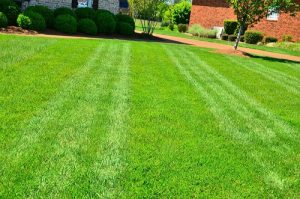
If gardening is your hobby or lawn care is your career, then using a lawnmower is a big part of your daily life. Did you know that accidents can happen when you use lawnmowers? Individuals have actually reported the loss of fingers and toes, damaged or disjointed bones, deep injuries as well as cuts, and numerous other injuries.
The numbers do not seem to go down as the years passed. This is why you need to be extra careful when handling lawnmowers. By adhering to some easy yet reliable lawn maintenance and mowing security guide, you could avoid being one of those injured statistics.
Security Guide You Need To Know
- In some areas, young adults who try to find extra money commonly do so by taking on lawn mowing jobs. Precautionary measures must be taken into consideration while letting them handle the lawn mowing equipment. It is suggested that kids listed below the age of 14 must not be allowed to use ride-on mower devices. If the kid is not yet in his teenage years, walk-behind mowers are a large no-no. However, with the improvement in modern technology, there are lawn mowers offered out there, which stop working when you raise your hand from the handle. These types of devices will undoubtedly add additional safety features to lawnmowers, thus preventing injury.
- An additional essential lawn mowing security guideline that must be adhered to is to identify that the lawn mower driver is putting on protective clothing and closed footwear. Wearing closed shoes not only keeps you comfortable but protects you from pain and injury. Other protective gears you need to wear are safety glasses to protect your eyes against eye injuries.
 Prior to beginning with grass cutting, it is constantly a good idea to remove rocks, playthings, and other things which might fly during lawn mowing that can also cause injuries. Likewise while cutting the grass, ask others to maintain a safe range away from the devices to guarantee their security.
Prior to beginning with grass cutting, it is constantly a good idea to remove rocks, playthings, and other things which might fly during lawn mowing that can also cause injuries. Likewise while cutting the grass, ask others to maintain a safe range away from the devices to guarantee their security.- Each time you refuel or start your lawn mower engine, do it outdoors and not in enclosed areas such as the garage. Another thing you need to remember prior to refueling is to make sure that the lawn mower’s electric motor is turned off and cooled down.
- An additional grass-cutting safety and preventative measure you should remember is that the blades of the lawn mower need to be effectively changed to ensure that grass or dirt is not stuck in the blades. This blade modification should be carried out by a grown-up after turning off the lawn mower motor.
If you want to be really sure and safe with regards to mowing your lawn, hire lawn care experts. These companies provide proper skills and safety training to their employees. You can be sure you get the best lawn mowing service without worrying about safety. By following the guide above, you are sure to prevent any danger and keep a tidy and attractive landscape.
Prevention is better than cure when it comes to lawn mowing, which is why you can call Conway Lawn Care Services. We take pride in providing high-quality and safe landscape services.
Like our Facebook page for more great info about lawn maintenance services.
Conway Lawn Care Service
Conway, SC 29526
843-353-2259
http://conwaylawncareservices.com/

 Optimal Grass Length:
Optimal Grass Length:
 Summer
Summer
 How to Patch Bare Patches with Sod
How to Patch Bare Patches with Sod